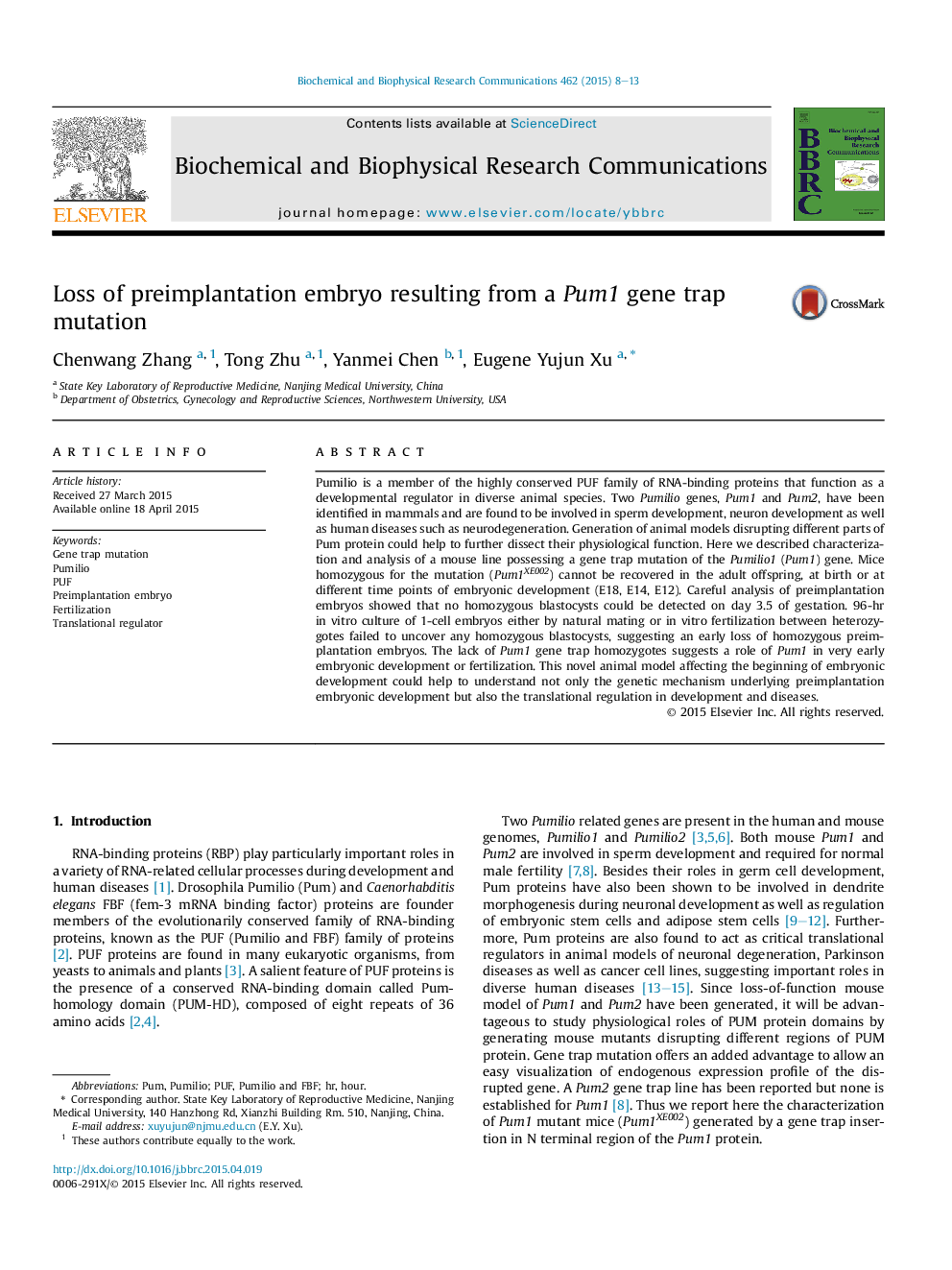| Article ID | Journal | Published Year | Pages | File Type |
|---|---|---|---|---|
| 10751380 | Biochemical and Biophysical Research Communications | 2015 | 6 Pages |
Abstract
Pumilio is a member of the highly conserved PUF family of RNA-binding proteins that function as a developmental regulator in diverse animal species. Two Pumilio genes, Pum1 and Pum2, have been identified in mammals and are found to be involved in sperm development, neuron development as well as human diseases such as neurodegeneration. Generation of animal models disrupting different parts of Pum protein could help to further dissect their physiological function. Here we described characterization and analysis of a mouse line possessing a gene trap mutation of the Pumilio1 (Pum1) gene. Mice homozygous for the mutation (Pum1XE002) cannot be recovered in the adult offspring, at birth or at different time points of embryonic development (E18, E14, E12). Careful analysis of preimplantation embryos showed that no homozygous blastocysts could be detected on day 3.5 of gestation. 96-hr in vitro culture of 1-cell embryos either by natural mating or in vitro fertilization between heterozygotes failed to uncover any homozygous blastocysts, suggesting an early loss of homozygous preimplantation embryos. The lack of Pum1 gene trap homozygotes suggests a role of Pum1 in very early embryonic development or fertilization. This novel animal model affecting the beginning of embryonic development could help to understand not only the genetic mechanism underlying preimplantation embryonic development but also the translational regulation in development and diseases.
Related Topics
Life Sciences
Biochemistry, Genetics and Molecular Biology
Biochemistry
Authors
Chenwang Zhang, Tong Zhu, Yanmei Chen, Eugene Yujun Xu,
